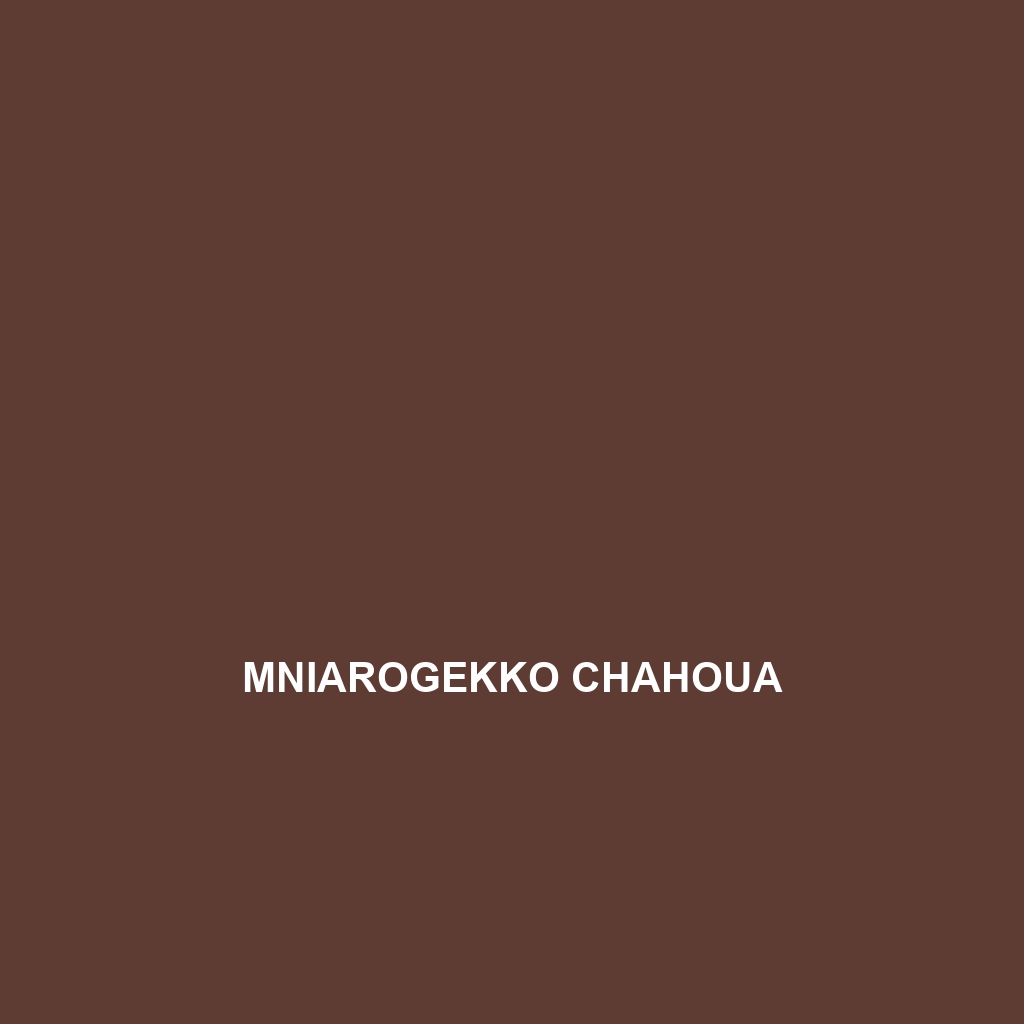Common Name
Mniarogekko chahoua
Scientific Name
Mniarogekko chahoua
Habitat
Mniarogekko chahoua, commonly known as the Chahoua Gecko, is primarily found in the lush rainforests of New Caledonia, a tropical paradise located in the southwest Pacific. This species thrives in humid, warm environments characterized by dense foliage and a high degree of biodiversity. The temperature ranges typically from 20°C to 30°C, coupled with significant rainfall, creates ideal conditions for their survival. Their preferred habitats often include the shaded canopy of trees, where they can find ample food sources and protection from predators. The Chahoua Gecko is also known to inhabit occasionally disturbed areas, adapting well to changes in its environment.
Physical Characteristics
The Chahoua Gecko exhibits a range of notable physical characteristics that make it easily distinguishable. Adults typically measure between 5 to 10 inches in length, featuring a robust, stocky body and a relatively large head. The skin is primarily a mottled brown or green, providing excellent camouflage against the bark of trees and leaves, which aids in evading predators. A defining characteristic of Mniarogekko chahoua is its specialized toe pads, which allow the gecko to climb effortlessly on vertical surfaces. These toe pads are covered with microscopic hair-like structures, giving them strong adhesive properties without needing sticky secretions.
Behavior
Diet
The Chahoua Gecko is primarily insectivorous, feeding on a diverse diet that includes crickets, cockroaches, and other small invertebrates. However, it also exhibits omnivorous tendencies, incorporating fruits and nectar into its diet, particularly in abundance during the reproductive season. This varied diet helps them adapt to different environmental changes and available food sources. Their feeding habits play a crucial role in controlling insect populations and contribute to the overall balance within their rainforest ecosystem.
Reproduction
The reproductive cycle of Mniarogekko chahoua typically occurs during the warmer months, with mating primarily observed between late spring and early summer. Females lay one to two eggs at a time in hidden locations, such as in tree hollows or under leaf litter, ensuring they remain protected from potential threats. The incubation period lasts approximately 60 to 90 days, depending on environmental conditions. Once hatched, the juvenile geckos are independent and must immediately begin foraging for food. Parental care is minimal, as the mother does not return after laying eggs, emphasizing the importance of camouflage and self-sufficiency in the early stages of life.
Conservation Status
Currently, Mniarogekko chahoua holds a conservation status of vulnerable according to the IUCN Red List. Habitat loss due to deforestation, invasive species, and climate change pose significant threats to their survival. Conservation efforts are underway to mitigate these challenges, including habitat restoration and the establishment of protected areas in New Caledonia. Public awareness campaigns aim to educate local communities about the gecko’s ecological importance and the need for sustainable practices to preserve their natural habitat.
Interesting Facts
One unique aspect of Mniarogekko chahoua is its impressive ability to change color based on environmental changes or emotional states. This adaptation not only aids in camouflage but also plays a role in social communication. Additionally, their prehensile tails can be used for balance and stability while navigating the treetops. The Chahoua Gecko also has a remarkable regenerative ability, enabling it to regrow its tail after losing it, a fascinating survival trait.
Role in Ecosystem
Mniarogekko chahoua serves a critical role in its ecosystem as both a predator and a prey species. By feeding on insects, they help control pest populations, contributing to the health of their rainforest habitat. As prey for larger birds and snakes, Chahoua Geckos are an integral component of the food web, providing energy transfer between various trophic levels. Their role in pollination when consuming nectar also highlights their importance in maintaining the biodiversity and health of the flora within their habitat.
